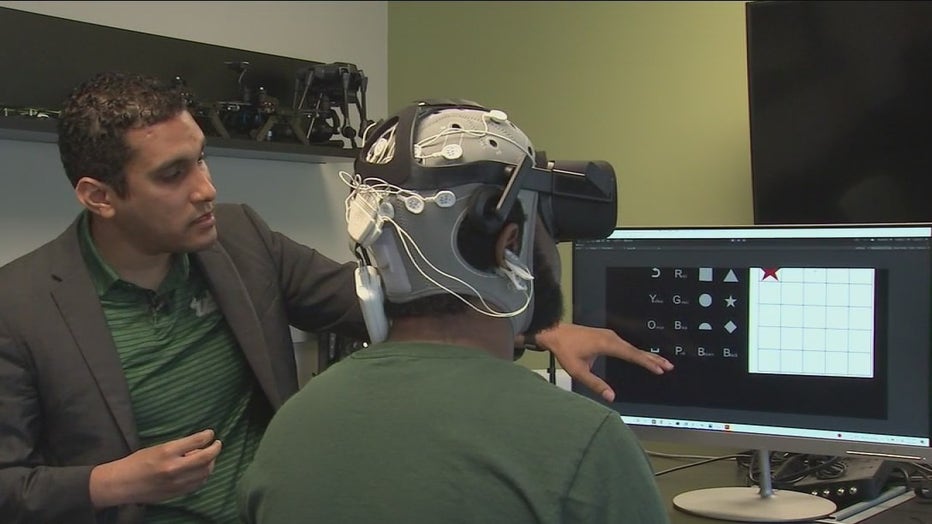USF professor uses 'brain painting' to help treat those with ADHD through abstract art

ADHD treatment using virtual reality
The computer interfaced program is called ?brain painting,? and it?s the brainchild of USF Researcher and Professor Marvin Andujar. He said the project started off from his work with brain-controlled drones, and then college students came to him for help with focus and concentration in classes.
TAMPA, Fla. - It’s possible to create a painting using only your brain and help treat ADHD through a program developed by a University of South Florida professor.
The computer interfaced program is called "brain painting," and it’s the brainchild of USF Researcher and Professor Marvin Andujar. He said the project started off from his work with brain-controlled drones, and then college students came to him for help with focus and concentration in classes. The program can use virtual reality headset or a specialized cap to record your concentration.
"This was measuring their attention levels with the brain when they were studying. Even if they weren’t diagnosed with ADHD, they feel that they get distracted very easily, and they will always ask how can I get something like this," said Andujar, Ph. D, an assistant professor in USF’s computer science and engineering department and the lab director at Neuro-Machine Interaction Lab.
He said brain painting not only helps with concentration but also mental health, and it trains college students in a new way to treat their ADHD or attention-deficit/hyperactivity disorder.
MORE: DeSantis cuts $75 million from USF environmental research facility
"If someone is relaxed or focused, they’ll be able to show that and pretty much express their brain activity in an artistic way," said Andujar.
He said he completed one study with 10 to 15 students and plans to start another next month.

"When it comes to brain painting, we’ve already been noticing feedback from the students even those who take Adderall, that they would like to use tools like this not as a replacement for the drug but as a training," he said.
It retrains the brain to think about the abstract picture. The bigger picture reaches outside the lab.
"Eventually the goal is for everyone to start using this at home," said Andujar.
He said he also wants to expand the study to see how well brain painting can treat kids with ADHD.
"As an adult I’m pretty much telling them to use their brain in a way they have never used before," he said. "For kids, they’re more creative, they’re more agile, so they’re able to adapt faster as they’re still growing."
He added that he’s open to parents contacting him about the future study for children. Another goal is to get the brain paintings shown as an art exhibit and even converted into NFTs, so the students can own their art, Andujar said.

